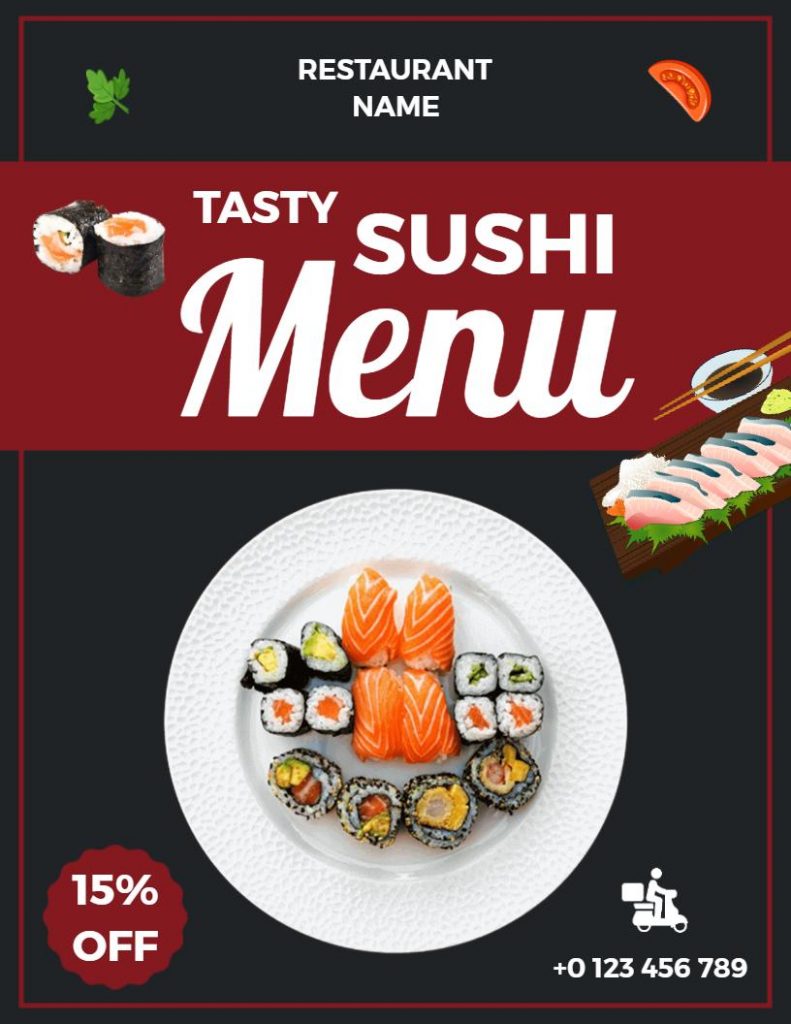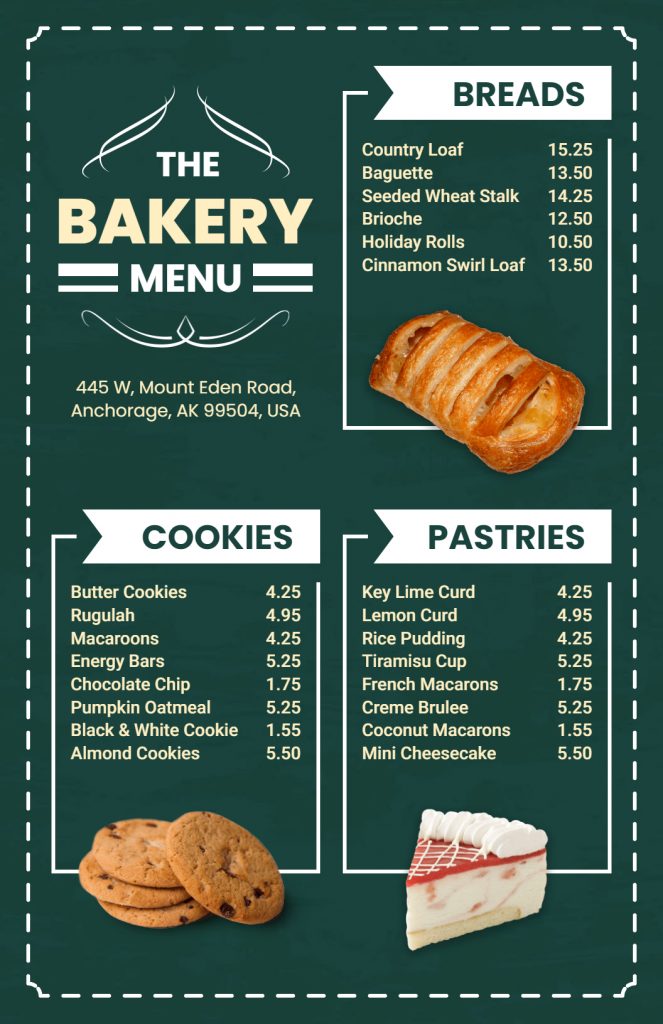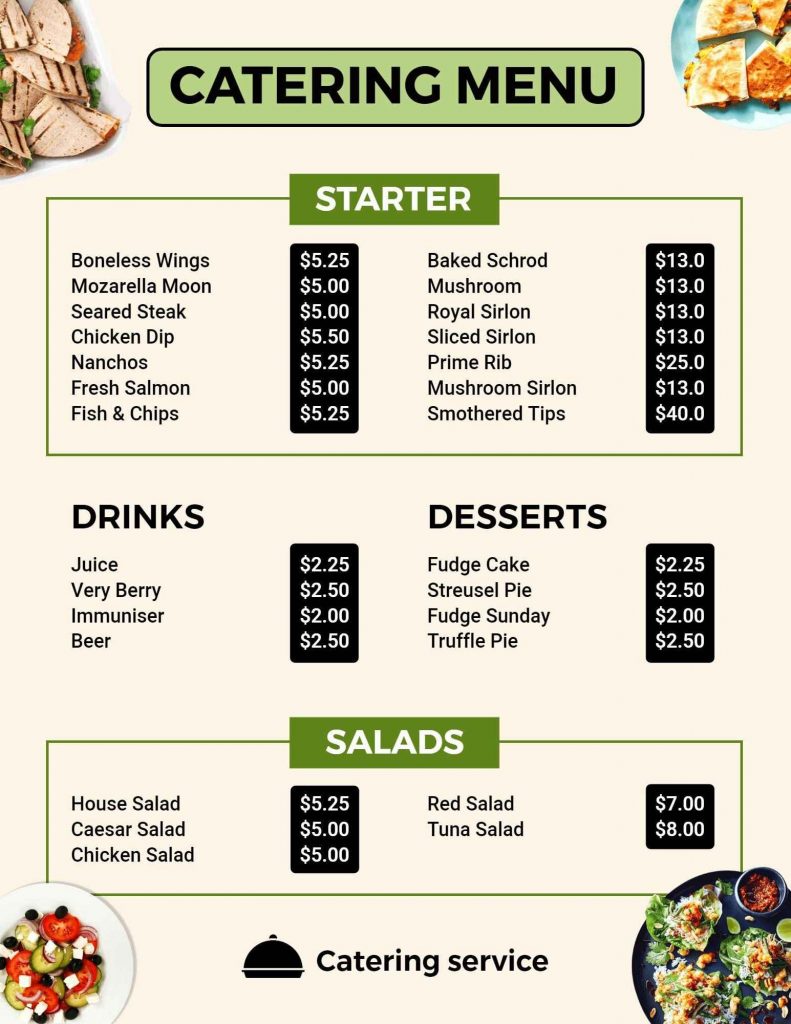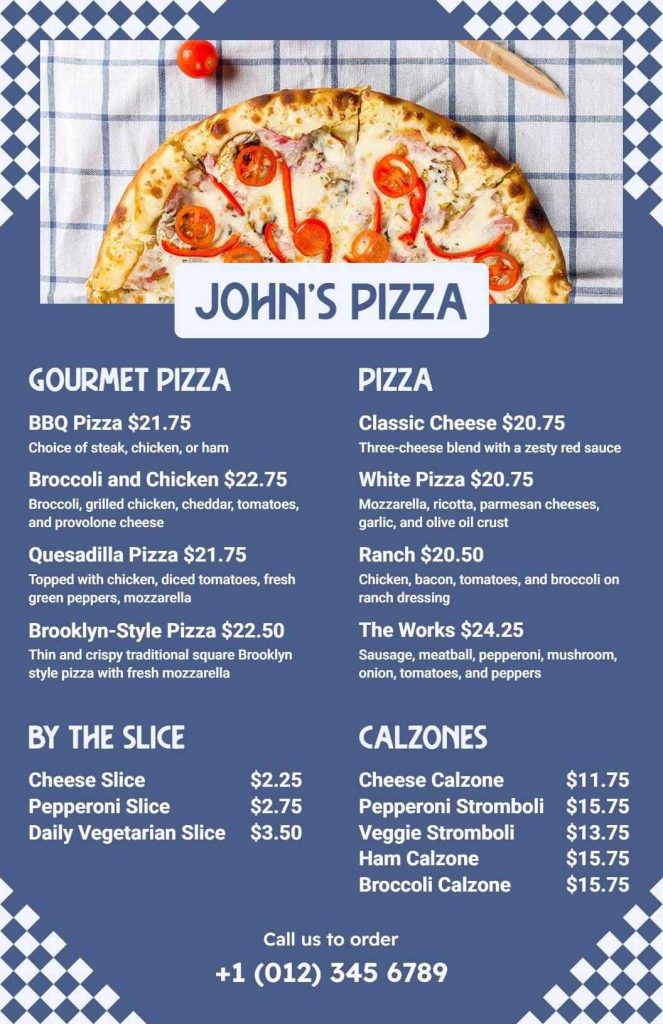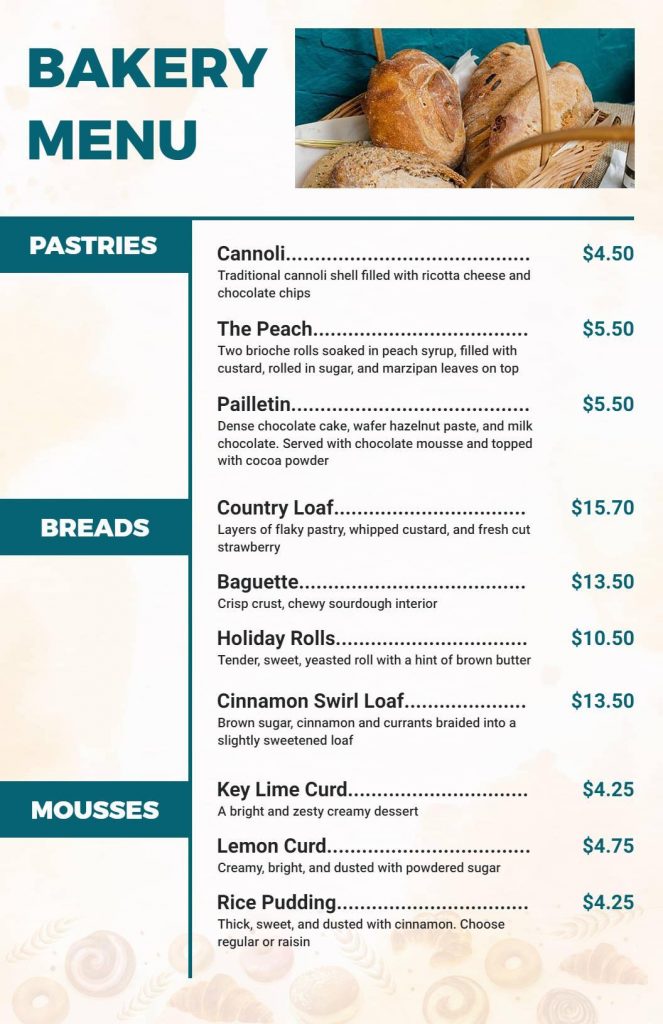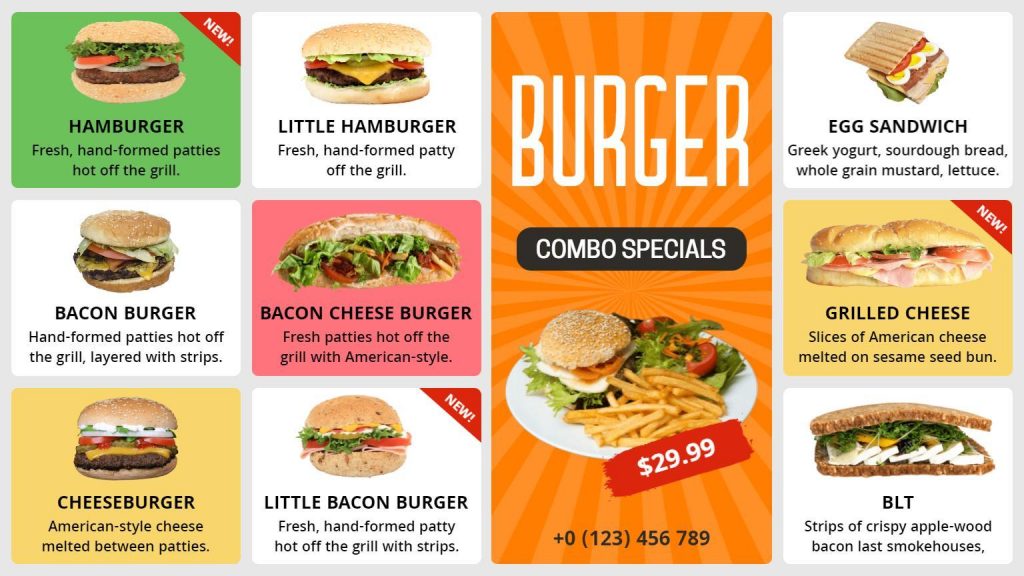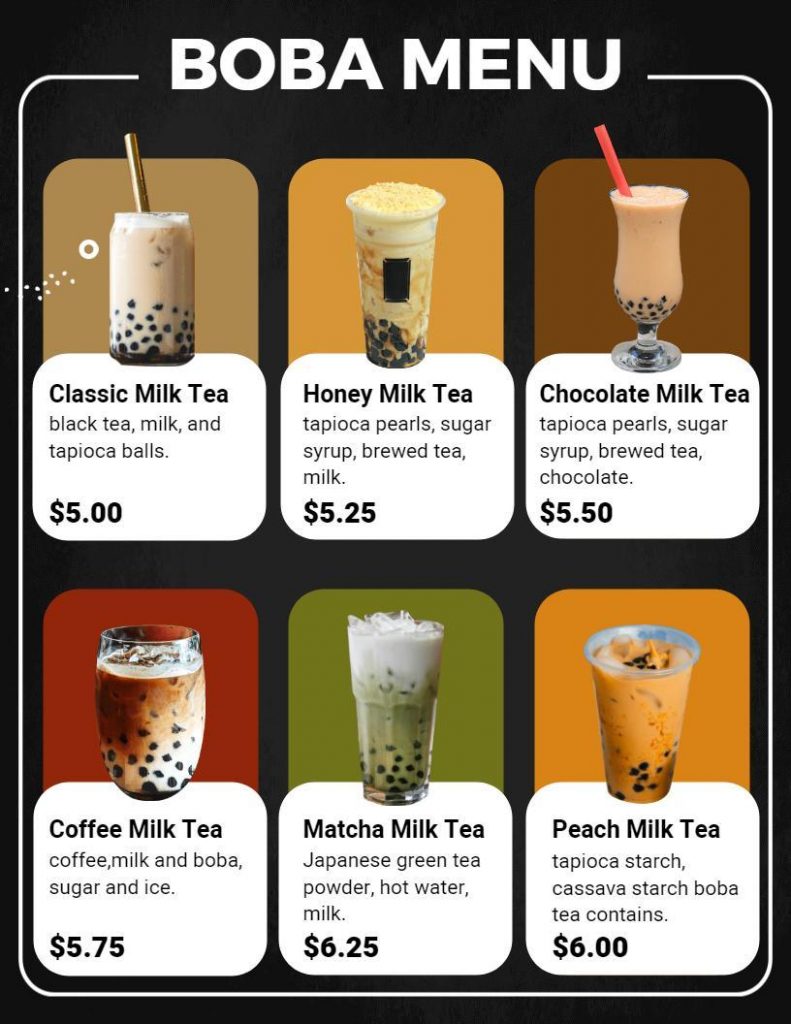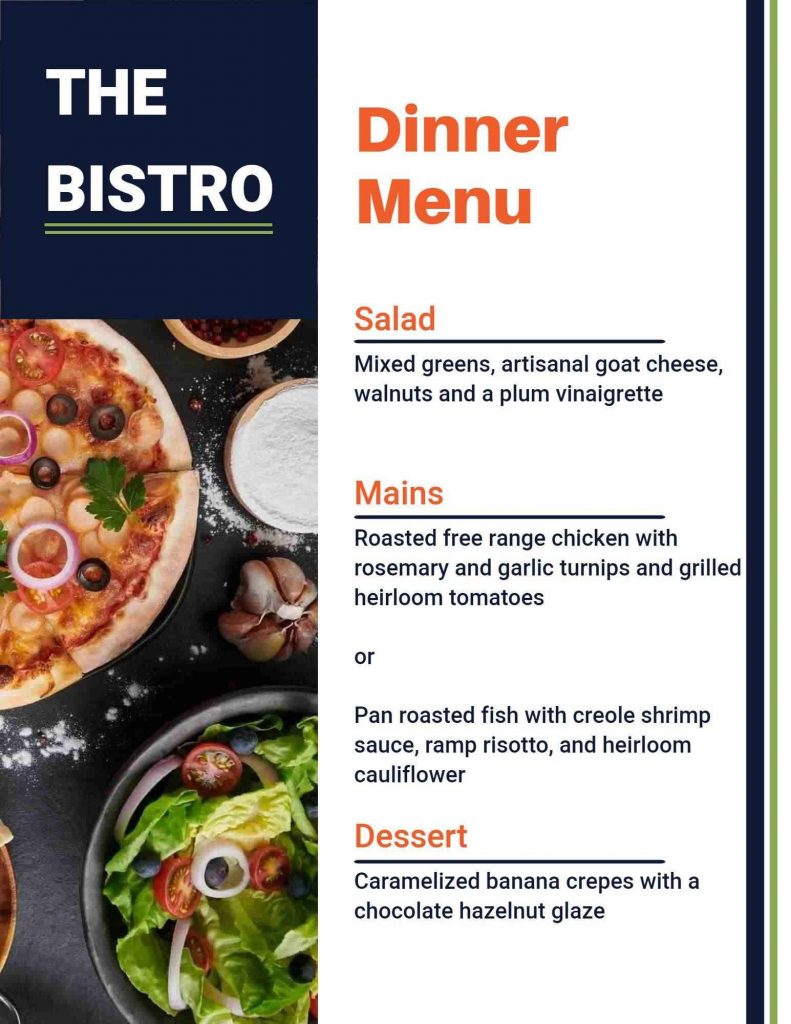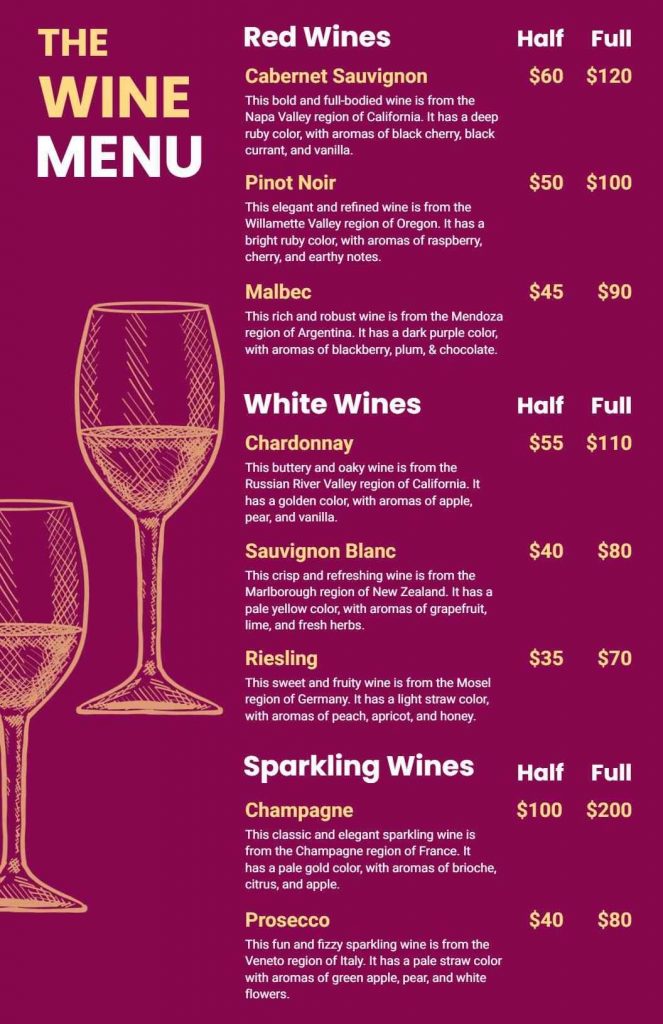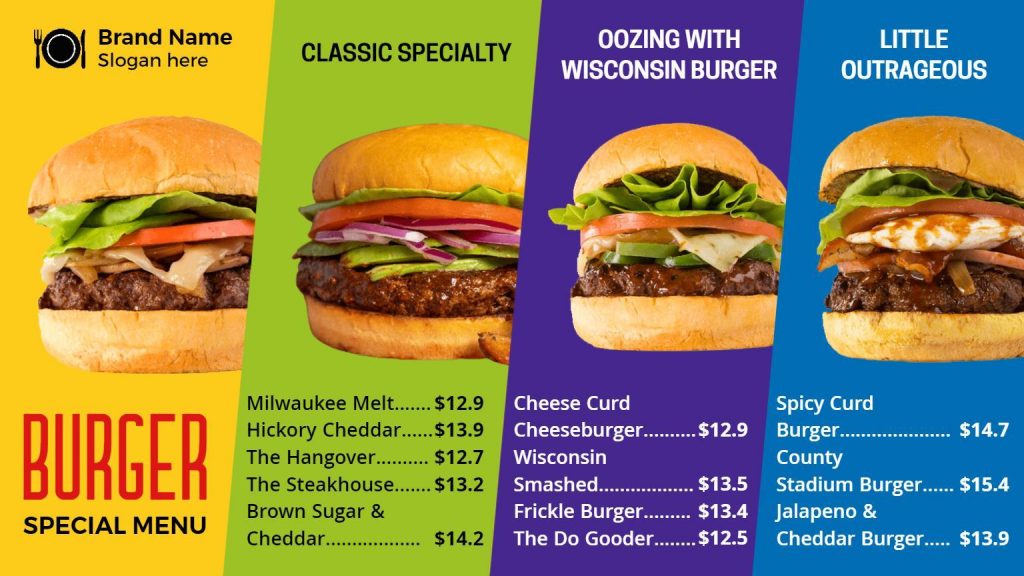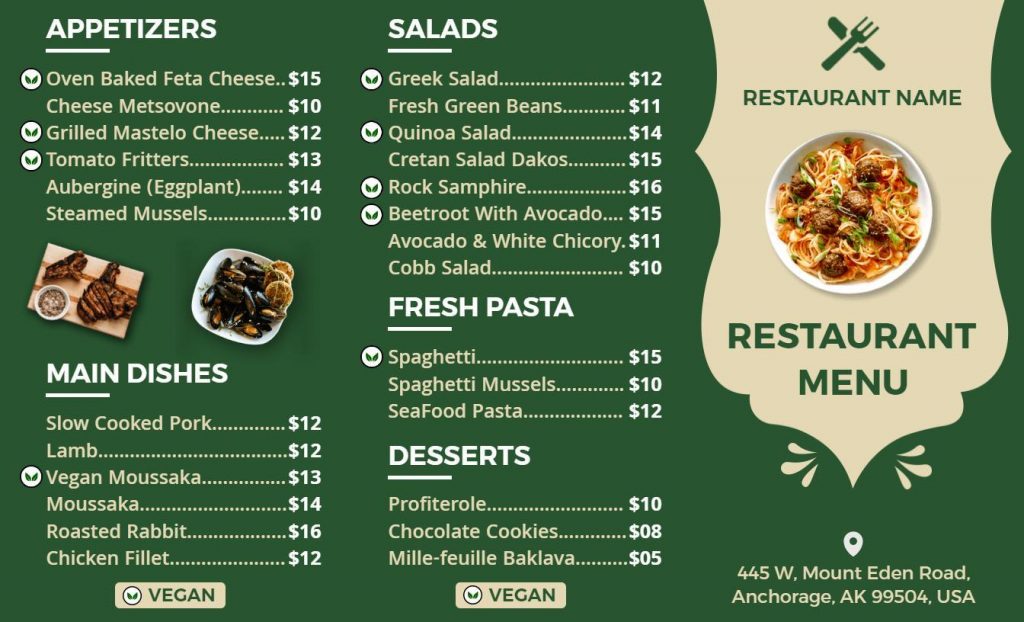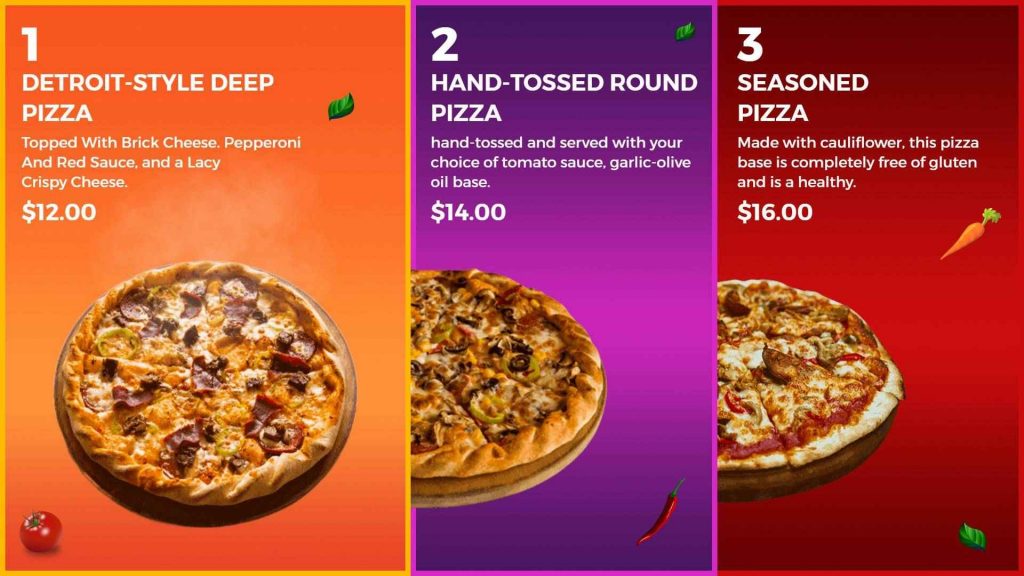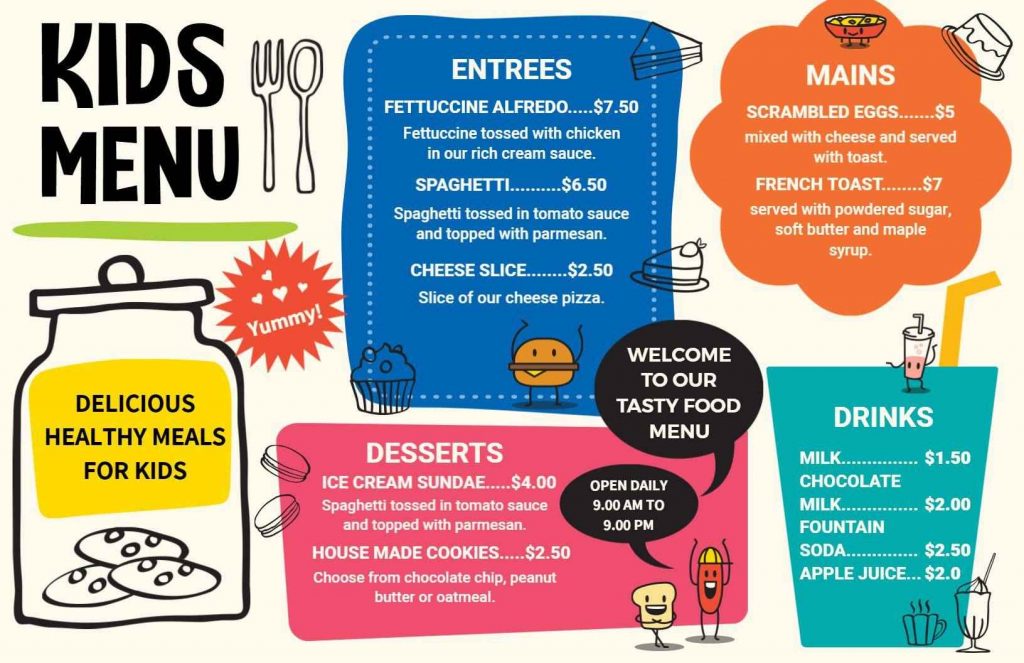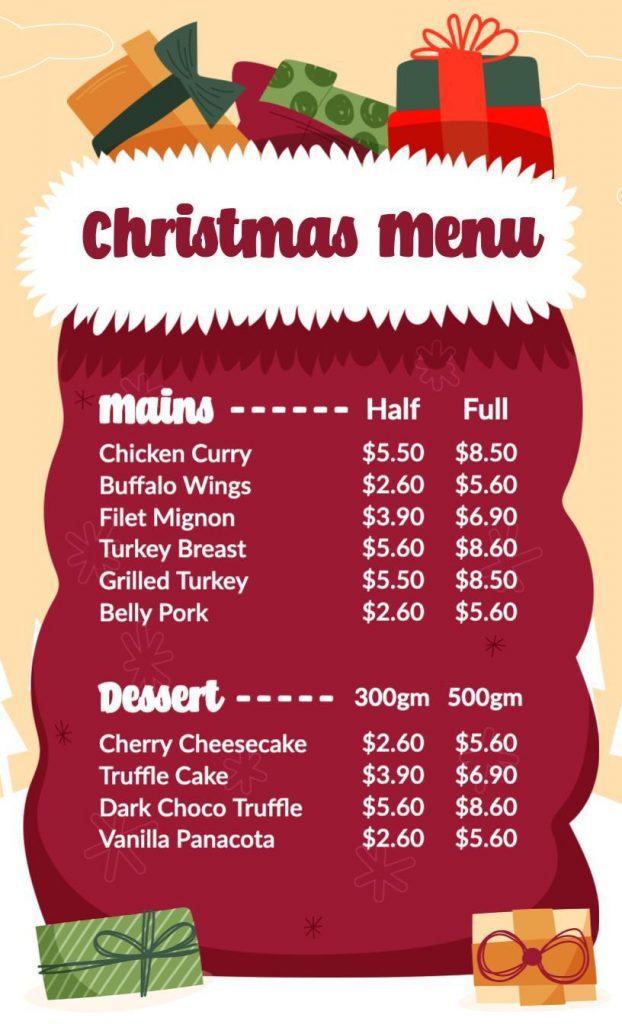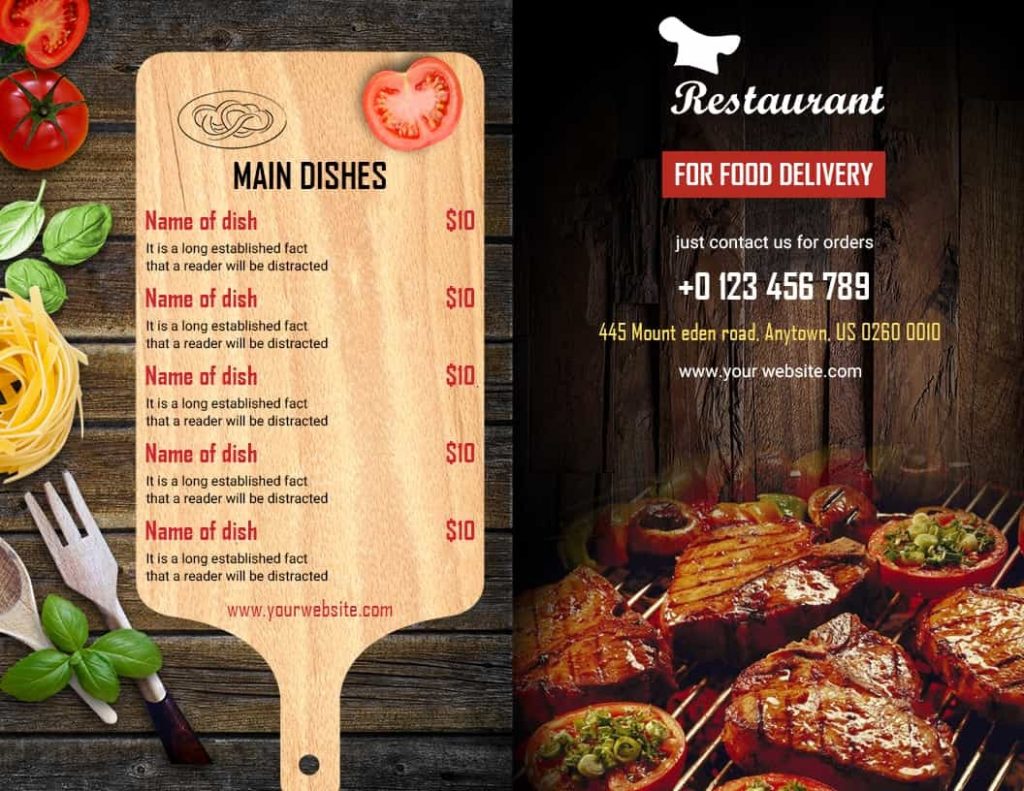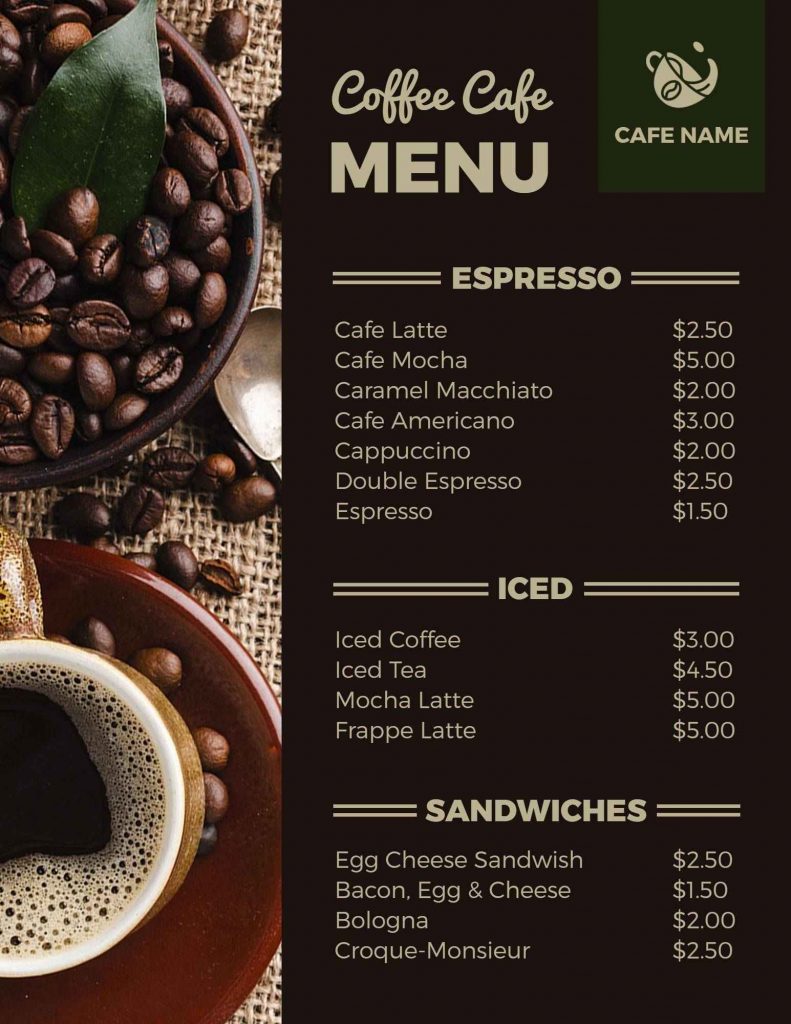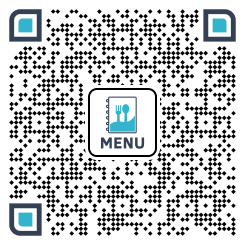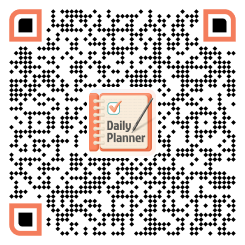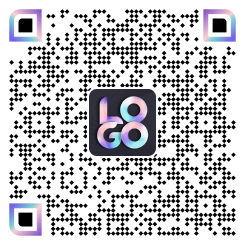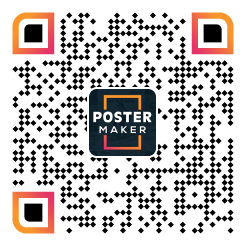A restaurant menu is more than just a list of dishes and drinks. It’s a marketing tool that can help set the tone for the dining experience, showcase the restaurant’s brand identity, and influence customers’ ordering decisions. The layout of a menu can greatly impact customers’ ordering decisions and set the tone for the restaurant’s overall brand identity. That’s why It is important to understand the psychology of menu design to create a menu that is not only visually appealing but also easy to navigate. Using online restaurant menu template any one can create an attractive menu easily.
In this article, we’ll explore creative and effective layout ideas for restaurant menus that can help enhance the overall dining experience. we’ll cover a variety of design styles that can help showcase your restaurant’s cuisine and personality.
Different Types of Restaurant Menu Layout
Introduction Layout
The restaurant menu introduction must be created carefully. It should give customers a glimpse of what the restaurant offers. The introduction should cover the restaurant’s concept, cuisine, and values. It must also create excitement and anticipation for the meal. A good introduction sets the tone for the dining experience. It can make a lasting impression on customers, encouraging them to come back. Furthermore, the introduction can help market the restaurant. It can help distinguish the restaurant from competitors and attract new customers.
Grid Layout
The grid layout is a classic design style that can help organize menu items in a logical and easy-to-read format. In addition, this layout involves dividing the menu into a grid of boxes or columns, with each box representing a menu item. Therefore, this layout is ideal for restaurants with a large number of dishes or a wide variety of cuisines.
Typography-Driven Layout
Typography-driven design focuses on the use of unique and visually striking fonts to draw attention to menu items. This design style can be especially effective for restaurants with a distinctive brand identity or that specializes in artisanal or handcrafted dishes.
Minimalist Layout of Restaurant Menu
A minimalist menu design can be visually appealing and easy to navigate. Furthermore, this design style emphasizes simplicity, with a clean layout, simple fonts, and ample white space. As a result, this approach can help draw attention to the dishes themselves, making it easier for customers to focus on their choices.
Photograph-Heavy Layout
A photograph-heavy layout can be an effective way to showcase the restaurant’s dishes and create a mouth-watering visual experience. This layout features large, high-quality images of menu items, which can help entice customers to order specific dishes. However, it’s important to ensure that the photographs accurately represent the dishes and are taken in a professional and consistent manner.
Vertical Design Layout of Restaurant Menu
A vertical menu design can help break away from the traditional horizontal layout and create a visually unique experience for customers. Additionally, this layout involves stacking menu items on top of each other, which can be effective for restaurants with a smaller number of dishes or that want to create a sense of movement or flow.
Horizontal Layout of Restaurant Menu
A horizontal layout restaurant menu is a type of menu design that presents the menu items in a landscape orientation, with the menu items listed from left to right rather than from top to bottom. This type of layout can be beneficial for restaurants that have a wide range of menu items, as it allows customers to easily view and compare different options side by side. Additionally, a horizontal menu layout can be aesthetically pleasing and can enhance the overall dining experience.
Interactive Layout of Menu
An interactive layout of a menu refers to a user-friendly design that allows customers to easily navigate through menu options and make selections. Interactive menus typically include features such as images, descriptions, and pricing for each item. They may also include filters or search options to help customers quickly find what they’re looking for. By presenting information in a clear and organized manner, interactive menus can enhance the overall dining experience and improve customer satisfaction.
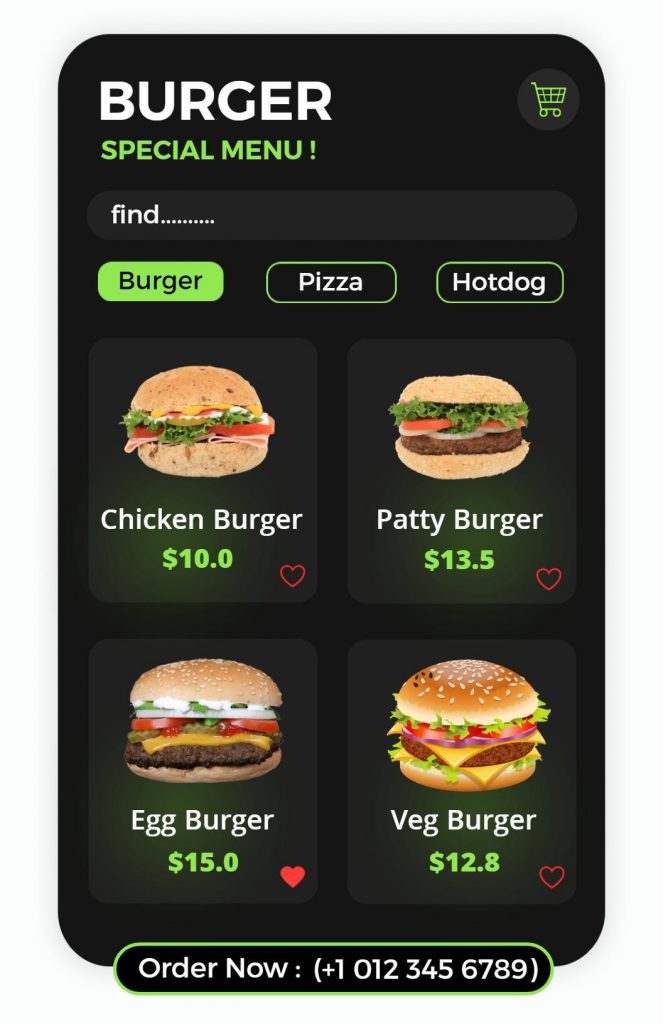
Illustrated Layout of Menu
Illustrated menus can add a whimsical touch to a restaurant’s branding and enhance the dining experience. Furthermore, they can be created in a variety of styles, from hand-drawn sketches to computer-generated images. As a result, illustrated menus can be especially effective for restaurants that have a playful or artistic concept.
Branding-Heavy Design Layout
A branding-heavy menu design can help reinforce the restaurant’s brand identity and create a cohesive visual experience. Additionally, this design involves incorporating branding elements like colors, logos, and fonts, which can help create a more memorable experience for customers.
Conclusion
In conclusion, a restaurant menu is a crucial component of the dining experience and can greatly influence customers’ ordering decisions. By utilizing creative and effective layout ideas like grid layouts, photograph-heavy layouts, vertical design, and branding-heavy design, restaurants can create menus that are visually striking and reflective of their unique brand identity. With the help of PhotoADKing’s menu maker, restaurateurs can simplify this process and focus on delivering a memorable dining experience. By taking the time to craft an effective menu, restaurant owners can attract and retain customers, ultimately leading to a more successful business.
Also, if you want to design your own menu, here is a guide on how to make a menu using templates.

